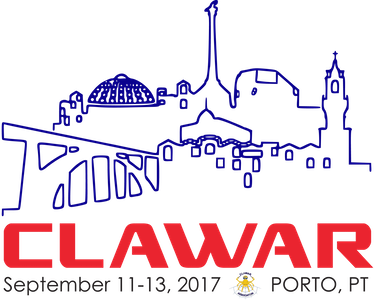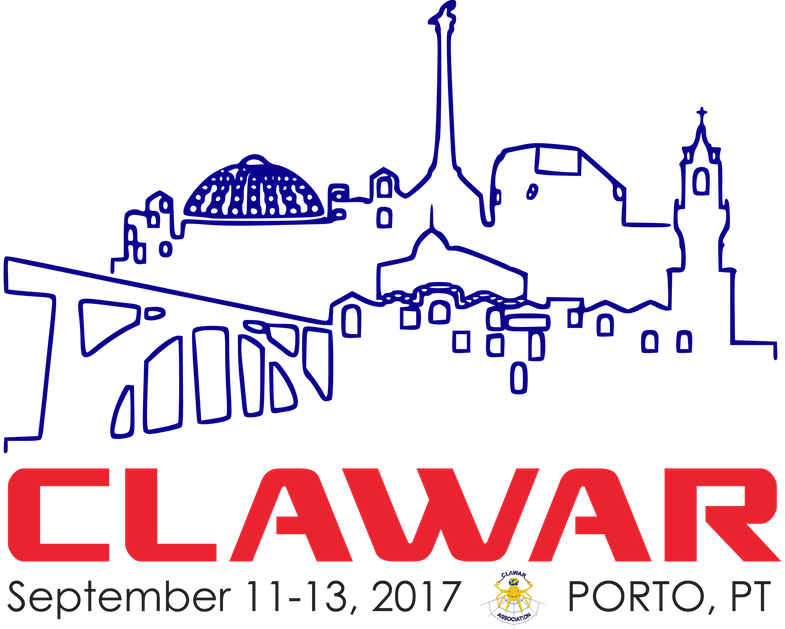Outline and Scope
The development of ‘Wearable Robotics’ addresses one of the main challenges of an aging society: a loss of mobility and physical ability in general. If the workforce can be supported to perform physical work until an older age while preventing musculoskeletal disorders, or if the elderly can remain mobile later in life and avoid a sedentary lifestyle, or if better rehabilitation of motor abilities after neurological damage can be achieved; each of these effects would constitute a huge socioeconomic impact based on societal inclusion and general health and productivity of the population.
The adoption of novel active wearable robotic devices, either for worker support, daily assistance or clinical rehabilitation, requires new approaches to ultimately enable efficient treatments and better facilitation of movement for individuals who perform physical labor or face a loss of their motor abilities. In particular, since these devices interact directly with humans, there are major challenges in their design and adoption, related to user acceptance, effectiveness, safety and functionality. Thus, there is a need to consider and integrate relevant knowledge from complementary disciplines such as mechatronic design, neuronal sciences, human-centered design, computer science, biomechanics, neuroscience, and psychology, among others. Integration of specific knowledge from such disciplines will enable to design the wearable devices as a natural extension and support of the human body. This is a fundamental requirement for larger adoption of such systems.
This session is primarily addressed at young researchers (PhD and advanced Master students), advanced researchers and professionals interested in Wearable Robotics for Assistive, Rehabilitation and Worker-support applications and in new perspectives in this field. The workshop provides a unique opportunity for faculty, students, industry and the general public to come together and learn about the latest advances in these fields of wearable robotics. The idea is to discuss current needs and future directions in an interdisciplinary fashion including industrial and medical end-users or application specialists, robotics engineers, human robot interaction scientists, as well as human factors and ELS specialists. The participants will get in touch with other colleagues in the field and they will have the opportunity to improve their knowledge through the presented talks.
The workshop is organized in collaboration with the recently started COST Action Network, CA16116 – Wearable Robots for Augmentation, Assistance or Substitution of Human Motor Functions. More information can be found on the Action website (http://wearablerobots.eu/) and on this section of this website.
Submission of Papers
Authors are invited to submit their full draft papers to this Special Session, in PDF format and up to a maximum of 8 pages, using the URL (https://www.softconf.com/g/clawar2017).
Authors should follow the guidelines of the template available at the paper submission page of the conference web-site by the indicated deadline in the conference web page.
Invited Speakers
Francesco Bottiglione (Polytechnic University of Bari)
Title: Energy recovering actuators to improve the range, the efficiency and the portability: old tricks for future applications
Abstract: Wearable robots for lower limbs aspire to become portable devices helping disabled people in the everyday life. In the meanwhile, a lot of work is still to be done on the actuators side to achieve the optimal tradeoff between the availability of powerful and long-ranged devices and their portability. The characteristics of lower limb movements are not the ideal ones for the commonly adopted electric drives. Firstly, they do not allow the actuators to work continuously in their optimal operating conditions. Furthermore, peak torque and power requested are much larger than the average ones. For these reasons, it is commonly necessary to oversize and to overweight the batteries and the actuators with respect to their actual usage, leading to drawbacks in terms of portability. In principle, all those everyday actions characterized by a periodic repeatability – walking above all – offer the chance to implement some old smart strategies to drastically reduce the energy requirements and the size of the motors. Periodic motions are indeed characterized by “active” phases, when energy must be provided by the actuator to the user side, followed by “passive” phases, when the energy must flow in the opposite way. An actuator capable of recovering and storing the energy in the passive phases and to re-use such energy in the active phases would consume much less energy and stress the motor only with the average values of requested power. An actuator capable of doing such a thing mechanically would do it efficiently. Several possible technical solutions have been and are being developed and will be briefly summarized. The ones based on kinetic energy accumulation and continuously-variable-transmission-driven power flow will be discussed in depth.
Carlos A. Cifuentes (Colombian School of Engineering Julio Garavito)
Title: Bio-inspired lower-limb exoskeletons for gait assistance and rehabilitation
Abstract: Exoskeletons are becoming one of the most promising devices to improve the quality of life to injured patients to regain the ability to walk. Bioinspired designs in exoskeletons could increase adaptability as well as minimal interference to perform gait movements. This talk presents some remarks of bio-inspired exoskeleton for enhanced physical interaction during gait assistance and rehabilitation, which are based on the motion analysis model, taking into account bio inspired design criteria, and also concepts of wearable robots.
Nina Lefeber (Vrije Universiteit Brussel)
Title: Robot-Assisted Gait: What About the Cardiometabolic Load?
Abstract: Lately, robot technology is being increasingly implemented in the gait rehabilitation of neurological patients (e.g. stroke patients). The aim of this development has been to reduce the physical load of the therapist and increase the training duration and intensity of the patient. In the past, research on the effects of robot-assistance has been mainly focused on gait related parameters. Yet, little is known about the effects of the cardiometabolic load (e.g. energy consumption, heart rate or minute ventilation). Nevertheless, neurological patients are often confronted with impaired cardiorespiratory fitness, which is a major risk factor in the development of cardiovascular diseases. Hence, it is important to gain insight in these aspects – both for safety as well as training related aspects. Numerous characteristics (e.g. type of robot, the level of assistance, speed and duration of walking, disease severity or stage of rehabilitation) however, complicate the estimates of the cardiometabolic load during robot-assisted gait. This presentation will review the current literature on cardiometabolic load during robot-assisted gait as well as preliminary results of own work in stroke patients. Particular gaps that still need to be targeted in the future will be highlighted.
Eduardo Rocon (Consejo Superior de Investigaciones Científicas)
Title: Robotic platform for the Rehabilitation of children with Cerebral Palsy: CPWalker
Abstract: Cerebral Palsy (CP) is the most common cause of permanent physical disability in childhood. CP is a disorder of posture and movement due to a defect or lesion in the immature brain. CP is often associated with sensory deficits, cognition impairments, communication and motor disabilities, behavior issues, seizure disorder, pain and secondary musculoskeletal problems. New strategies are needed to help to promote, maintain, and rehabilitate the functional capacity, and thereby diminish the dedication and assistance required and the economical demands that this condition represents for the patient, the caregivers, and the society. During this talk, I will present a pilot study done with several children with spastic CP, who trained with a new robotic platform called CPWalker during five weeks. This experimental device is a novel over ground prototype for gait rehabilitation with body weight support for children with CP. After rehabilitation training, both patients improved the mean velocity, cadence, and step length. Moreover, the comparison between pre and post- kinematics analysis without the robot shows specific developments for each subject depending on the focus of the therapy (mainly trunk or hip flexion-extension).
Herman van der Kooij (University of Twente)
Title: Rendering lower limb neuro-mechanics in a wearable exoskeleton for SCI subjects
Abstract: Current exoskeletons replay pre-programmed trajectories at the actuated joints. To allow spinal cord injury (SCI) subjects to walk again, ultimately without additional support aids, we aim to emulate the neuromechanics of the limbs in a modular torque controlled wearable exoskeleton. We employed a biologically inspired neuromuscular controller (NMC). This model encodes principles of legged mechanics through several local reflex loops that activate depending on leg-ground contact state. While the NMC has been implemented in a powered ankle prosthesis and shown to normalize gait for transtibial amputee subjects, these controllers have not yet been implemented in multi-dof devices that support locomotion. Our aim is two-fold. First, we further validate and refine the NMC in the context of force perturbations, and second, we determine its efficacy for the control of wearable exoskeletons, in particular, those that allow SCI subjects to walk again.
Ivanka Veneva (Bulgarian Academy of Sciences)
Title: Active Orthotic system for Assistance and Rehabilitation
Abstract: The aim focuses on developing an active/assistive orthotic system (exoskeleton) fabricated with light materials and powered by pneumatic artificial muscles. The exoskeleton structure includes left and right upper limb, left and right lower limb and central exoskeleton structure for human torso and waist and provides support, balance, and control of different segments of the body. The design is inspired by the biological musculoskeletal system of human upper and lower limbs and mimics the muscle-tendon-ligament structure. Joints actuation and positioning are achieved by producing appropriate antagonistic torques through the antagonistic action of pneumatic actuators applying impedance control. The exoskeleton for upper limbs can be used as a haptic device for human interaction with virtual environments where both motion tracking and force feedback are required.
A Control System for joint actuation, positioning and force feedback and force-reflecting interface that can display sensory information from a virtual reality to the user will be discussed. The active orthotic system has a wearable structure and anthropomorphic workspace that can cover the full range of human motion and can operate in three modes – Motion tracking system with data exchange with virtual reality; Haptic and rehabilitation device; Assistive Mode with active orthosis in cases of impaired muscles. The system would be of great importance to people with limited mobility for assistive and rehabilitation tasks.
Loris Roveda (Institute of Industrial Automation and Technologies – ITIA, National Research Council – CNR, Italy)
Title: Empowering Humans’ Capabilities in Industrial Context
Abstract: Empowering robotic solutions are exploited for industrial applications in order to reduce/limit risk factors related to musculoskeletal disorders (MSDs) and to improve the capabilities of humans. This paper aims at proposing both (a) the design and (b) the control of a cooperative manipulator in order to empower humans in onerous industrial tasks execution. (a) a dual driven actuation (DDA) is proposed and described for the shoulder joint of an empowering robotic system. (b) a fuzzy impedance control based approach to assist the human operator while lifting (partially) unknown weight components is proposed. The control method has been validated in a hatrack-like component installation, case-study related to the H2020 CleanSky 2 EURECA project. The proposed application has been shown during the KUKA Innovation Award. As a test platform, a KUKA iiwa 14 R820 has been used.
Matteo Lancini (University of Brescia)
Title: Upper limb loads during robotic assisted gait: a measuring system to guide training
Abstract: Patients suffering from Spinal Cord Injury (SCI) can partially restore their walking function over ground and reduce of the secondary pathologies thanks to a frequent use of powered exoskeletons for robot-assisted gait. However, many of these devices require crutches to stabilize the body or to initiate the step. This could induce high loads on the shoulder joints, leading to shoulder pain and pathologies in SCI patients. This study presents a methodology to evaluate shoulder joints loads during robotic assisted gait, which was applied to an expert user of a Rewalk® exoskeleton. A pair of wireless instrumented crutches, designed by the authors, measure the crutches’ forces and movements. A simplified mechanical model of the patient is then simulated in OpenSim to perform both inverse kinematic and inverse dynamic analysis. Such a system could be applied during the initial training of new users, to help guide both patient and therapist towards an optimal usage of the exoskeleton.
Krzysztof Kozlowski (Institute of Automation and Robotics, Poznań University of Technology)
Title: Wearable hand rehabilitation system with force feedback
Abstract: This presentation treats the analysis of a force control algorithms and their implementation for the hand rehabilitation system with force feedback. Presented device is intended for people with neurological and orthopedic injuries arising from stroke, musculoskeletal diseases, and upper limb injuries. This system uses the neuroplastic abilities of nerve tissue to create new connections and healing itself through stimulation of human’s proprioceptive system. The device is equipped with force sensors, digital servomechanisms, and control unit based on the microcontroller. The system can work autonomously. Furthermore, connected to PC allows registering the progress of treatment.
Heba Lakany (University of Strathclyde)
Title: Requirements specifications for a wearable robotic exoskeleton for rehabilitation
Abstract: Wearable robotic exoskeletons could provide a solution to the ever growing pressure on rehabilitation services. They could provide the increased intensity and required repetition giving objective feedback on patient’s progress. They can also support independent practice freeing up clinicians time resulting in improved efficiency. Integration of wearable robotic exoskeletons for rehabilitation can result in efficient and effective outcomes for all users (i.e. patients, clinicians, carers, community therapists). However, there is evidence of varied, slow or even lack of adoption and integration of these technologies into mainstream practice and in clinical pathways for rehabilitation. It is important to bridge the gap between technology developers and technology users or adopters to ensure the promotion of patient centered functional recovery.
We present the results of a study aiming to compile a set of requirements specifications based on users’ interviews and surveys. We have interviewed over seventy patients and clinicians to explore the requirements of a wearable upper limb exoskeleton device defined by the users to facilitate the adoption of the technology within rehabilitation services in hospitals and in the community and ensure the efficacy of the outcome.
Session Organisers
Cristina P Santos
Escola de Engenharia da Universidade do Minho, PORTUGAL
Juan C. Moreno
Neural Rehabilitation Group, SPAIN
Jan F. Veneman (COST CA16116 Action Chair)
Tecnalia Research and Innovation, SPAIN
CLAWAR 2017 Conference Key Submission Dates:
01 20 February 2017: Submission of Full Draft Papers (extended)
15 March 2017: Notification of Paper Acceptance
12 April 2017: Submission of Final (accepted) Papers













